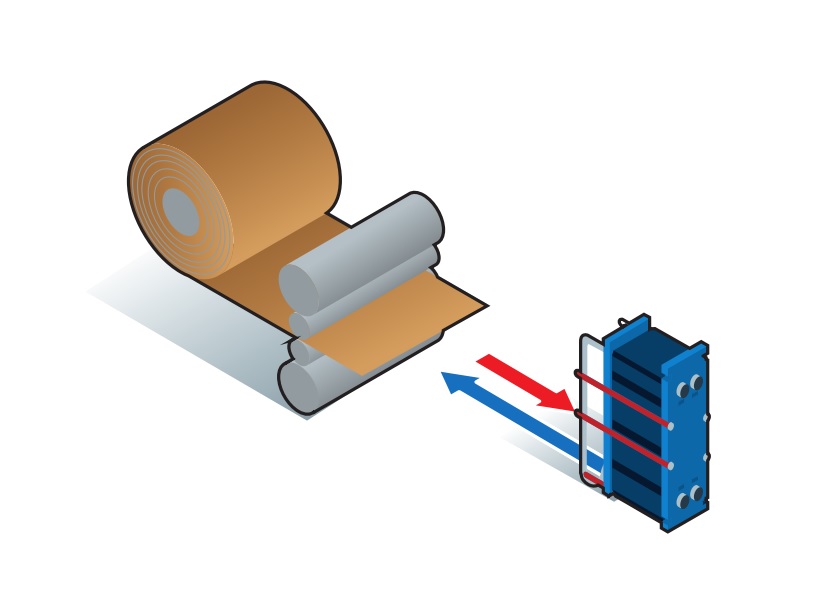
Strip rolling mill is the main method for shaping steel to various products. Rolling process involves passing steel through two rollers rotating at the same rpm and in the opposite directions. By decreasing the distance between two rollers, the thickness of steel which is being rolled, reduces and simultaneously its length increases. In hot strip rolling mill, a casting slab is converted to a sheet (often wound at the end of the process).
First, the slabs of casting are reheated in the furnace. Then one by one, using conveyor rollers, they are transferred to a hot strip rolling mill line. In this step, the slabs are rolled until they reach the desired dimensions. Since, rollers in hot strip rolling mill process are exposed to temperature rise and deformation, therefore rollers must be well cooled to accurately control the shape and thickness of the rolling steel sheet. For this purpose, it is common to spray water and oil emulsions onto rollers. As well as roller cooling, this emulsion reduces the load on the rollers, reduces vibrations and, as a result, improves the quality of the rolled product surface. Then sprayed solution of water and oil (0.5% oil and 99.5% water) is collected and after filtration, passes through a heat exchanger to be cooled down.